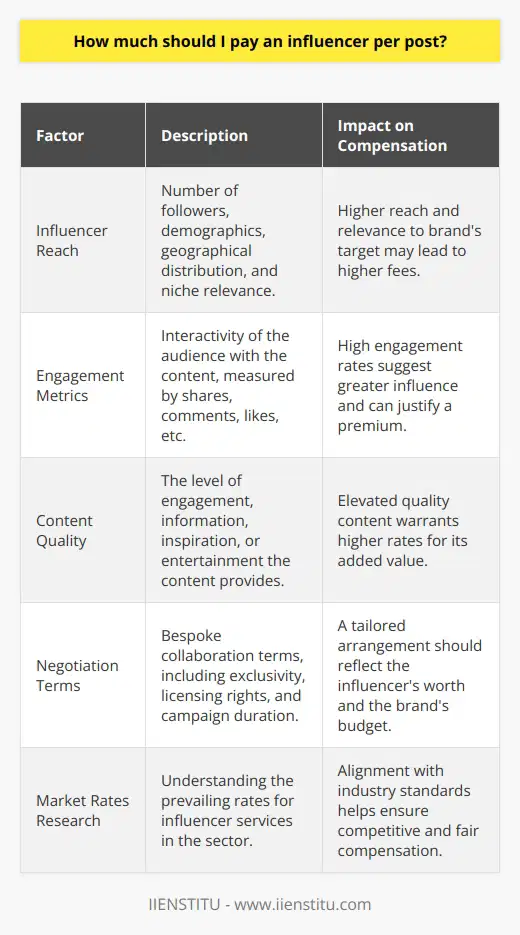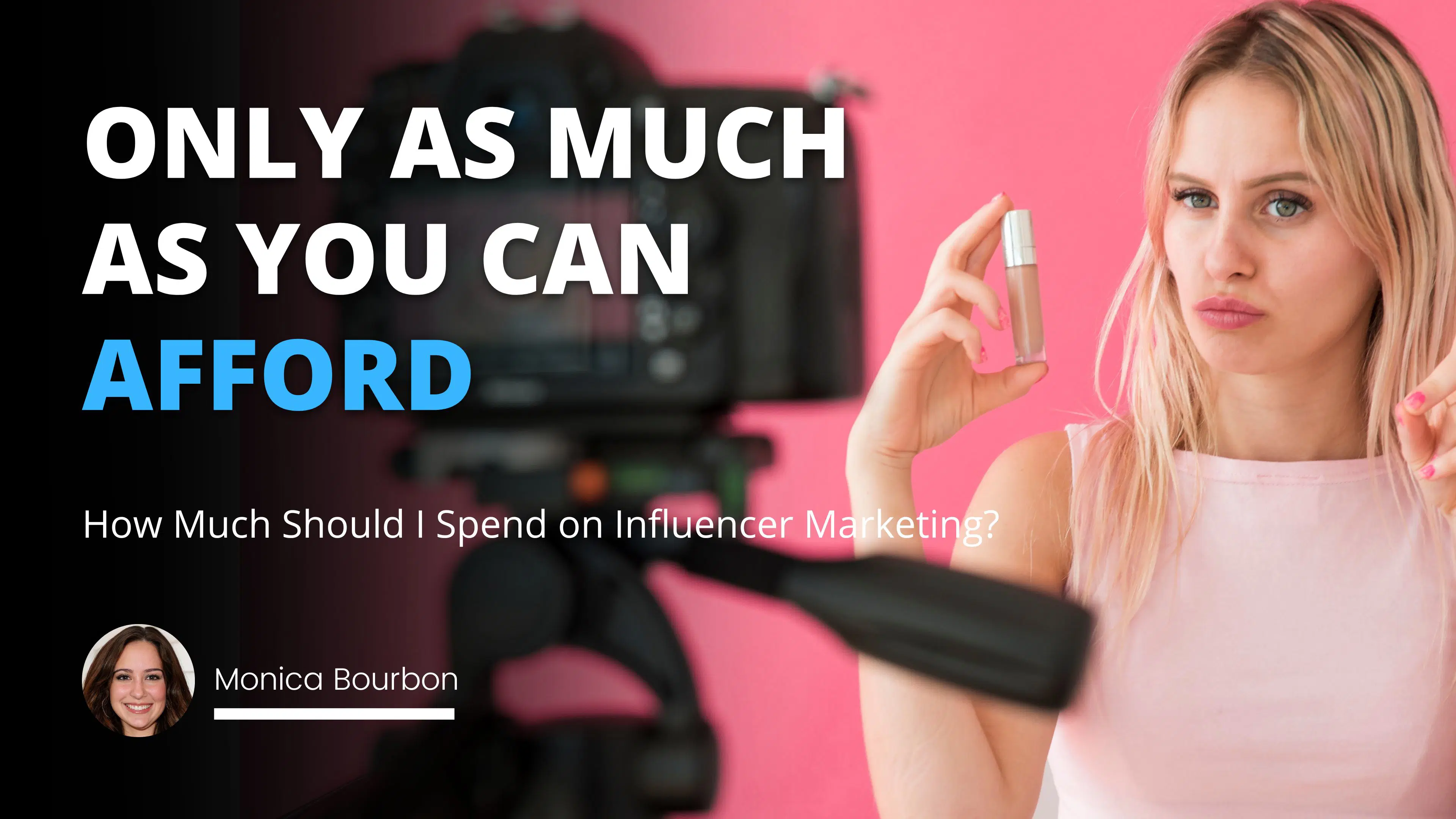
Influencer marketing has become increasingly popular among brands and businesses in recent years. This is because it can be a powerful tool for reaching new audiences, building brand awareness, and driving sales. However, one of the biggest challenges faced by marketers when using influencers is determining how much they should spend on this type of marketing.
This paper will explore how much money brands should allocate for their influencer campaigns and strategies for optimizing their budget. It will also look at case studies to show how different companies have executed successful influencer campaigns and what lessons can be learned from them.

In addition, this paper will discuss best practices for creating an effective influencer campaign while staying within budget constraints. Finally, it will provide advice on evaluating the success of an influencer campaign so that future efforts may be optimized accordingly.
Overview of Influencer Marketing
Definition and Benefits
Challenges Faced by Marketers
Determining the Budget for an Influencer Campaign
Strategies for Optimizing a Budget
Case Studies of Successful Influencer Campaigns
Best Practices for Creating an Effective Influencer Campaign on a Budget
Evaluating the Success of an Influencer Campaign
Conclusions and Recommendations
Overview of Influencer Marketing
In recent years, influencer marketing has become an increasingly popular strategy for brands and businesses to reach new audiences, build brand awareness, and drive sales. This article will provide an overview of the benefits of using influencers in a marketing campaign and some challenges marketers may face when utilizing this approach.

It will also discuss strategies for determining the budget for an influencer campaign and best practices for creating effective campaigns while staying within budget constraints. Finally, it will provide advice on evaluating the success of a campaign so that future efforts can be optimized accordingly.
Definition and Benefits
Influencer marketing is identifying, engaging with, and leveraging influencers (i.e., people who have a strong influence over others) to promote a product, service, or brand. This type of marketing relies on the idea that people are more likely to purchase something if it is recommended by someone they trust.
The benefits of influencer marketing are numerous. For example, it can generate more organic traffic to a website or blog, promote brand awareness, and increase conversions. Additionally, influencers can help create engaging and shareable content, which can further boost the visibility of a product or service.
Challenges Faced by Marketers
While influencer marketing can be a powerful tool for brands, there are also some challenges associated with it. One of the main challenges marketers face is determining how much to spend on an influencer campaign.

This is because there is no "one size fits all" approach, and budgeting for influencer campaigns must be tailored to each situation. Additionally, since the success of an influencer campaign depends mainly on the quality of the influencers chosen, it can be challenging to identify potential influencers who will represent a product or brand in the best possible way while staying within budget constraints.
Determining the Budget for an Influencer Campaign
When it comes to digital marketing and influencer campaigns, the budget is one of the most crucial aspects that must be considered. No matter how great your strategy or ideas may be, without proper funding, it can all go to waste.
Related Course: Digital Marketing Course
Because of this, setting a budget beforehand is extremely important but often times a challenge. From gathering data on industry trends, understanding goals and objectives, to forecasting performance—there are many factors to consider when crafting an influencer campaign’s budget.
In this section we'll dive deep into tips for setting an effective and successful budget for any influencer marketing campaign!
Strategies for Optimizing a Budget
When determining the budget for an influencer campaign, it is essential to consider all the costs associated with engaging and working with influencers. This includes any fees paid to the influencers and any additional costs such as production, promotion, or travel expenses.

Also, marketers should factor in additional resources that may be needed, such as additional staff or software programs. Additionally, it is essential to set realistic goals and expectations for what can be achieved within a specific budget to optimize campaigns accordingly.
Case Studies of Successful Influencer Campaigns
In order to illustrate how different brands have successfully executed successful influencer campaigns while staying within their budget constraints, several case studies will be discussed.
One example is a campaign by a sunglasses manufacturer that utilized influencers from multiple industries to create content showcasing the product and its features. This allowed them to reach new, untapped audiences in different markets while staying within budget constraints. Additionally, the company used various tracking methods, such as click-through rates and social media metrics, to measure the campaign's success and optimize future efforts accordingly.
Another successful example is an influencer marketing campaign for a fashion brand. The company identified several influential fashion bloggers with large followings and negotiated deals with each one that included monetary compensation and free products. This strategy enabled them to effectively market their products without breaking the bank. They also tracked the results of the campaign in order to optimize their strategies and budget for future efforts.
As seen from the above statistics, many brands dedicate a significant portion of their marketing budget to influencer marketing. This shows that influencer marketing is an effective tool for brands looking to optimize their budget and reach larger audiences.
When done correctly, influencer campaigns can help brands reach more people and build trust with potential customers while staying within budget constraints. With the right strategies and research methods in place, marketers can identify influential figures who will authentically represent the brand while optimizing their budget accordingly.
Additionally, tracking the results of campaigns is key to ensuring that future campaigns are executed as efficiently as possible and tailored to each situation. The success of any influencer campaign depends on a combination of factors, such as the influencers chosen, the content and messaging conveyed, and how well the budget is optimized.
Through successful case studies and an understanding of what it takes to optimize a budget for influencer campaigns, brands can use their resources efficiently while building meaningful relationships with potential customers.
Conclusion
In conclusion, influencer marketing can be a powerful tool for brands looking to increase visibility and conversions. However, to ensure its success, marketers must carefully consider all costs associated with engaging with influencers, set realistic goals and expectations, and track the results of campaigns in order to optimize future efforts accordingly. By following these steps, brands can maximize their budgets while achieving desirable outcomes from their influencer marketing campaigns.
References:
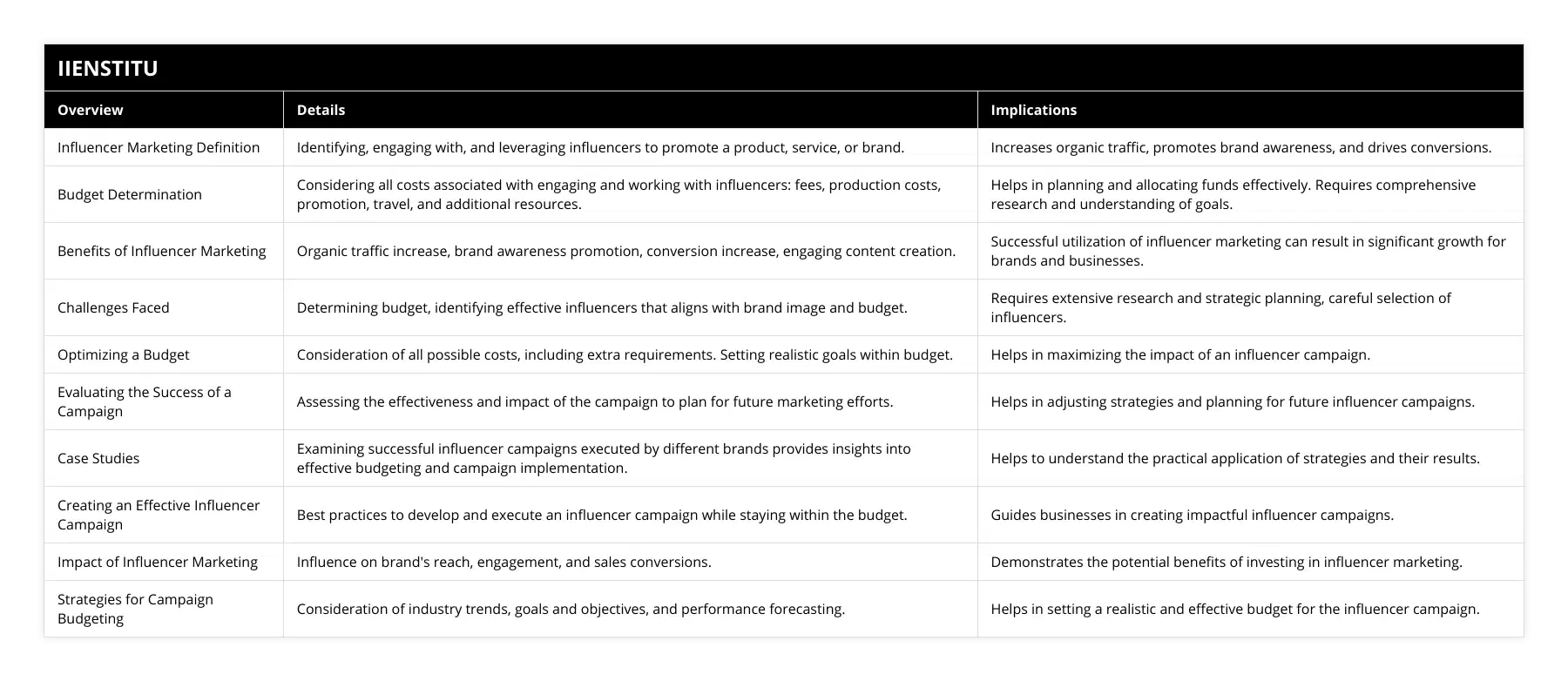
Frequently Asked Questions
What is influencer marketing?
Influencer marketing is a marketing strategy that involves leveraging influential figures to help promote a product, service, or brand. These influencers typically have a large online following and can provide companies with an effective way to target their desired audience. Companies can reach more potential customers through influencer campaigns while staying within budget constraints.
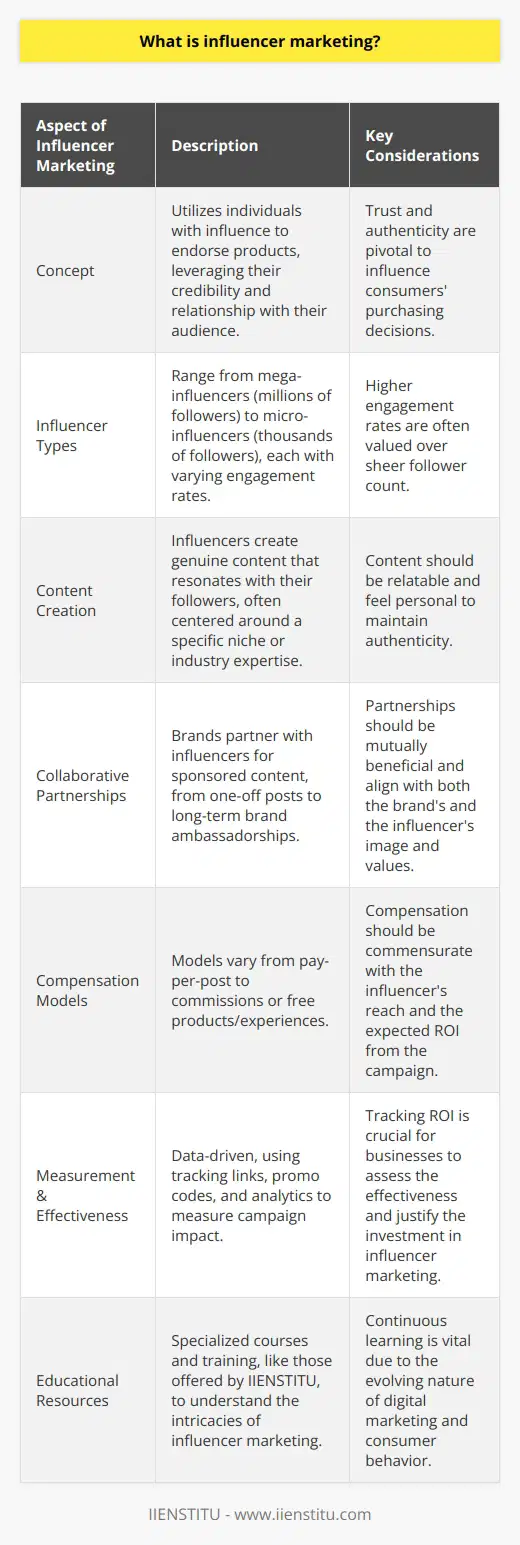
How can brands optimize their budget for influencer campaigns?
To optimize their budget for influencer campaigns effectively, brands must carefully consider all costs associated with engaging with influencers and set realistic goals and expectations. Additionally, it is essential to track the results of the campaign in order to adjust strategies as needed and maximize ROI. Finally, marketers should also research potential influencers to ensure they are the right fit for the brand and its objectives.

How can marketers track their progress during an influencer campaign?
Marketers should use analytics tools such as Google Analytics or social media monitoring software to measure the success of an influencer campaign in terms of reach, engagement, conversions, and other factors. Additionally, tracking click-through rates and social media metrics such as likes, comments, shares, mentions, etc., can provide valuable insights into a campaign's success.
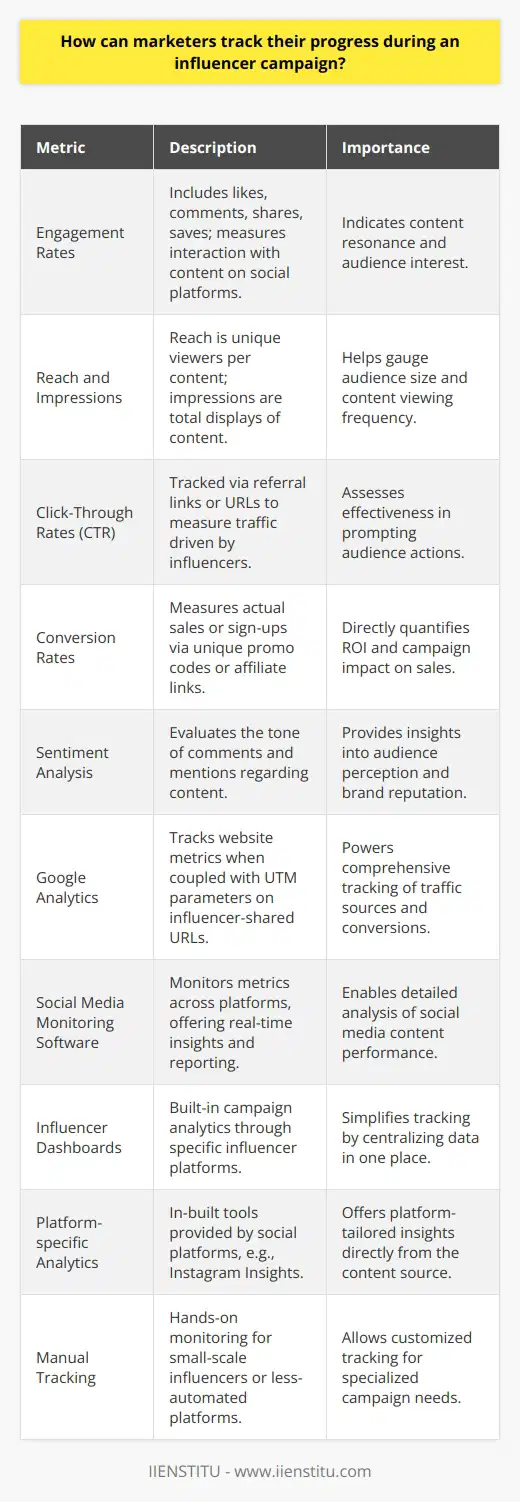
What percentage of marketing budgets are spent on influencer campaigns?
According to a global survey conducted in 2022, 39 percent of respondents stated they invested 10 to 20 percent of their marketing budget into influencer marketing; five percent devoted more than 40 percent to digital marketing activities. This shows that many brands are dedicating considerable resources towards influencer marketing strategies due to their effectiveness in reaching larger audiences without breaking the bank.
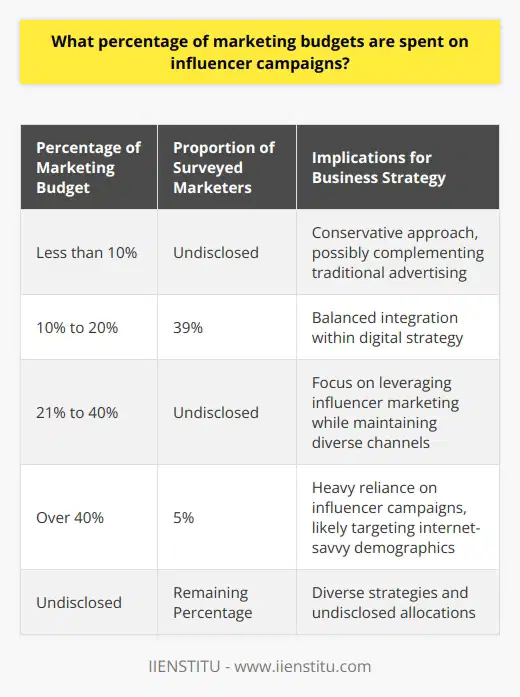
What types of influencers should brands look for when creating a campaign?
Brands should look for influencers who align with their target audience and can reach that demographic. Additionally, it is essential to ensure the influencer is a good fit for the brand in terms of messaging, values, and overall aesthetic. It is also beneficial to find an influencer who has experience working with other brands and knows how to create content that resonates with their followers.
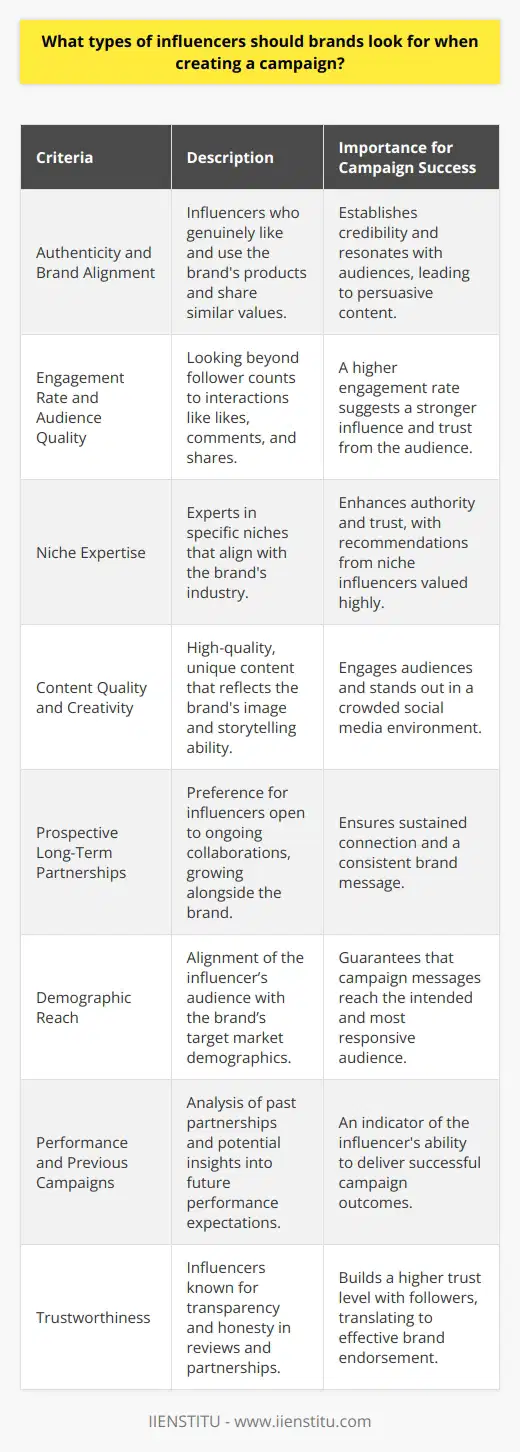
What are some tips for developing a successful influencer marketing campaign?
To ensure success, brands must create clear objectives and goals, develop a strategy based on those goals, research potential influencers to find the right fit, track results to optimize future efforts, and measure outcomes. Additionally, brands should set realistic expectations for their campaigns and budget accordingly. By following these tips, brands can maximize their budget while still achieving desirable results from their influencer marketing campaigns.

What is a good budget for influencer marketing?
Determining a Suitable Budget
To establish a good budget for influencer marketing, several factors must be taken into consideration. Each business should evaluate their objectives, target audience, and available resources before planning a budget. A suitable budget will depend on the desired reach, engagement, and return on investment (ROI) of the campaign.
Assessing Objective and Target Audience
The primary goal of influencer marketing is to reach and engage the target audience effectively. Brands must first determine their target demographic and identify the preferred social media platforms. The choice of influencer should align with the brand's ethos, and their audience should match the target customer base. This approach ensures higher engagement rates and better conversion.
Allocate Resources for Campaigns
Resource allocation is crucial for a well-executed influencer marketing campaign. Budgeting should include content creation fees, influencer payments, and any additional promotional costs. Typically, smaller-scale collaborations with micro-influencers may cost a few hundred to several thousand dollars per post, while partnering with mega-influencers may range from tens to hundreds of thousands of dollars.
Setting Realistic Goals for ROI
Understanding the expected ROI is vital when budgeting for influencer marketing. Set realistic goals based on the previous performance of similar campaigns within your niche. Metrics such as reach, impressions, engagement rates, and conversions are critical to evaluate the campaign's success. With these performance indicators, businesses can allocate budgets that maximize returns efficiently.
Consider Alternative Cost Models
Influencer partnerships offer several cost models, including pay-per-post, performance-based fees, or product-focused partnerships. Exploring various pricing structures allows brands to find a suitable solution based on their anticipated ROI and budget. While flat rates are more common, performance-based models may be more beneficial for brands looking for better engagement.
In conclusion, a good budget for influencer marketing is contingent on multiple factors, including objectives, target audience, available resources, and desired ROI. Businesses should carefully consider their goals and invest in influencer partnerships that provide tangible value. Evaluating campaign performance metrics and exploring cost models is essential for determining a budget that aligns with the brand's needs and resources.
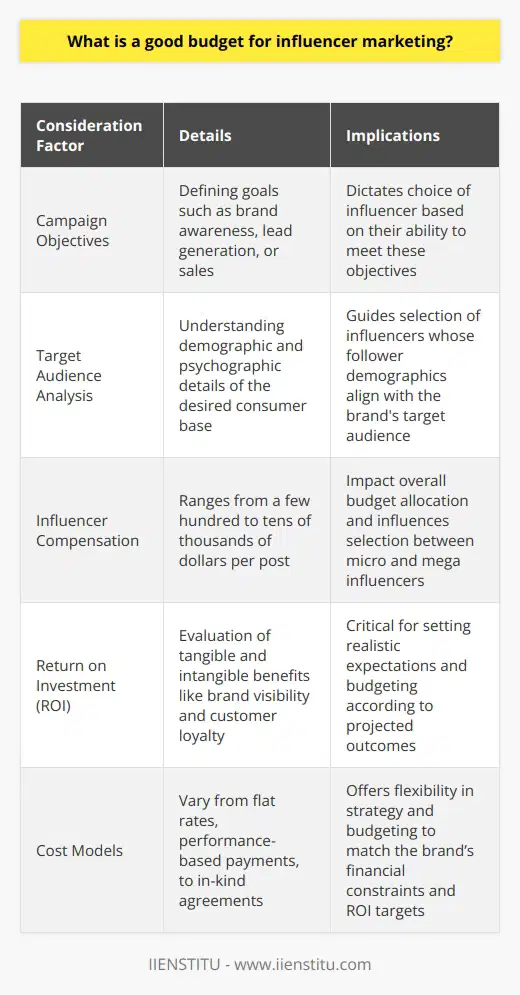
How much commission should I pay an influencer?
Determining the Appropriate Commission Rate
In order to ascertain the appropriate commission to pay an influencer, one must consider various factors that contribute to their value in driving engagement and conversions. A multifaceted approach to selecting a suitable commission rate entails understanding the influencer's reach, engagement rate, target audience's demographic, and campaign objectives.
Evaluating Influencer's Reach
The reach of an influencer evidently reflects the number of followers or subscribers they possess. A larger reach signifies greater potential in creating brand awareness and attracting a wider audience, hence potentially necessitating a higher commission rate. However, reach isn't the sole determinant, as engagement rates must also be assessed to ensure follower quality.
Examining Engagement Rates
An influencer's engagement rate determines how frequently and meaningfully their audience interacts with their content. A high engagement rate indicates that the influencer's followers are genuinely interested in the content being promoted, thus implying higher conversion possibilities. In this case, paying a higher commission can be justified, as it promises increased revenue through conversions.
Factoring in Demographic Alignment
Another significant aspect to consider when determining an influencer's commission is how well their target audience aligns with that of your brand. Understanding the demographic makeup of the influencer's audience is imperative for evaluating how likely they are to convert potential customers. If the influencer reaches a demographic closely aligned to your ideal target market, a higher commission might be warranted.
Aligning Campaign Objectives
Lastly, comprehending the nature of your marketing campaign and its objectives plays a crucial role in determining an influencer's commission rate. If the primary goal is to enhance brand visibility or increase reach, a commission based on engagement, such as likes or shares, might be suitable. Alternatively, if driving sales and conversions is the ultimate objective, a commission-per-sales arrangement might be more appropriate.
In conclusion, determining the commission to pay an influencer for a blog post necessitates evaluating their reach, engagement rate, audience demographic, and the brand's marketing objectives. A balanced approach that takes these factors into account will ensure that both the brand and the influencer receive equitable compensation for their efforts, leading to a successful and mutually beneficial partnership.
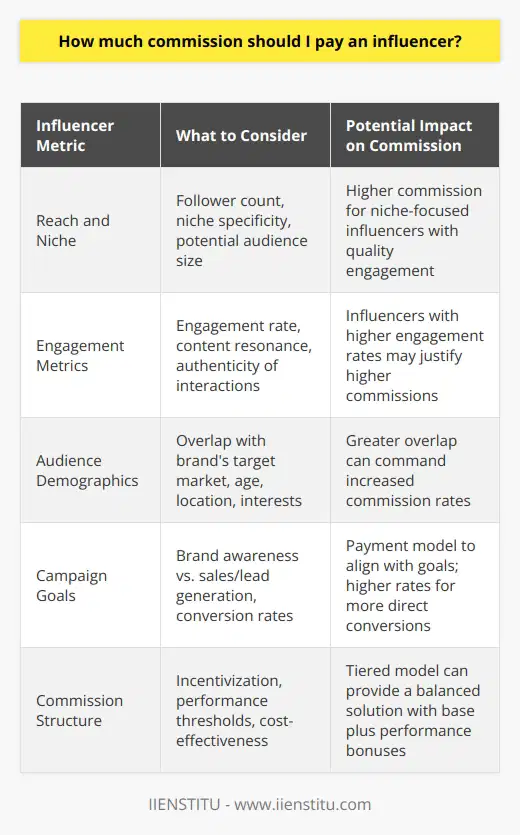
How much should I pay an influencer per post?
Determining Influencer Payment
In order to ascertain the appropriate amount to pay an influencer per blog post, it is necessary to carefully consider a variety of factors. The first of these factors is the influencer's reach, which can be assessed using metrics such as the number of followers, views, or engagement on their posts. Generally, the more extensive the reach, the higher the payment should be.
Evaluating Engagement Levels
Apart from reach, it is essential to evaluate the level of engagement that the influencer's content receives. Engagement includes likes, comments, shares, and clicks on their blog post. A high level of engagement often implies that the influencer's audience is genuinely interested in the content, which translates to a higher potential impact for the advertised product or service. Consequently, influencers with strong engagement rates should receive higher remuneration.
Assessing Content Quality
The quality of the influencer's content is another determinant for payment. High-quality posts demonstrate professionalism and an ability to effectively convey the intended message to the target audience. Content that is well-written, concise, visually appealing, and resonates with the audience should attract a higher payment.
Negotiating Rates
Influencers often have different rates for various types of posts, such as sponsored content, product placements, or affiliate links. This necessitates a negotiation process where both parties discuss their expectations and work to reach a mutually agreeable payment. Both the marketer and the influencer should be prepared to compromise while ensuring that the agreed-upon rate is reasonable and fair.
Industry Benchmarks
Consulting industry benchmarks and conducting research on competitor practices can provide valuable insights for determining influencer payment. This information can be obtained from industry reports, public marketing campaign disclosures, or by directly reaching out to other professionals in the field.
In conclusion, determining the appropriate payment for an influencer per post requires a comprehensive analysis of the influencer's reach, engagement, content quality, and negotiation, along with a consideration of industry benchmarks. Ultimately, finding the right balance between these factors will ensure that businesses pay a fair and appropriate rate for services rendered by influencers, maximizing their return on investment.
